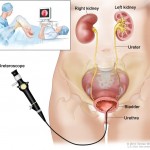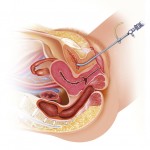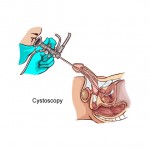Diagnosis of Bladder Cancer
Patients with symptoms suggestive of bladder cancer and indications for urological evaluation would usually undergo a thorough evaluation that would include Family history a comprehensive social history including medical and social history focused on risk factors such as exposure to industrial chemicals and certain medications and medical treatments that predispose to bladder cancer.
At physical exam will be performed as well which may include a pelvic exam and women and a prostate exam in man. These are sometimes performed in the operating room and is known as pelvic exam under anesthesia.
An imaging study that may include initially an ultrasound or a CT scan of the abdomen and pelvis may be performed.
[col type=”one-fourth”]



[/col]
[col type=”three-fourth last”]
An endoscopic procedure to examine the bladder, called cystoscopy will be performed. Cystoscopy can be performed in the office settings without requirement for anesthesia.
if the initial evaluation suggests the presence of a bladder tumor it will be biopsied or resected in the operating room using a cystoscope and the resectoscope.
Evaluation of the biopsy under the microscope will determine whether or not cancer is present in the bladder. If cancer is determined to be present, further evaluation may be undertaken and further treatment will be instituted depending on the exact pathology including type of cancer, grade of the cancer and stage of the cancer.
If a bladder cancer is diagnosed, a number of treatment options are available depending on stage of the disease. For non-invasive disease, intravesical therapy with BCG along with surveillance cystoscopy is often done. For more aggressive bladder cancer, radical cystectomy surgery or chemoradiation may be chosen.
[/col]